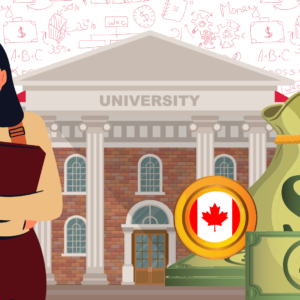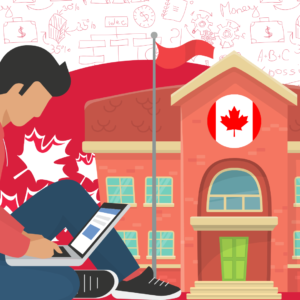There comes a time when we heed a certain call, when the world comes together as one.
And that time has come after (yet another) brutal killing – of yet another man of colour. This is the story of George Floyd and how his killing has sparked a global movement against hate and racism.
The quick back story
On the 25th of May, three white officers of the Minneapolis police arrested George Floyd, on the charges that he had bought cigarettes with a counterfeit $20 bill. Within seventeen minutes of the police arriving, George Floyd was pinned on the ground, lifeless under (former) officer Derek Chauvin’s knee. A video of the incident showed the former officer kneeling mercilessly on Floyd’s neck for eight minutes and fifty six seconds, despite him begging for mercy, pleading that he could not breathe. The video was shared on social media and the country erupted in protests. People, across the US, took to the streets – some even vandalising shops, marketplaces, and police vehicles. The rest of the world followed.
Protests have broken out in at least forty countries across six continents – all of which echo the same thoughts – to stand up to institutionalised racism, and call for a check on police brutality.
An unsettling pattern
Floyd’s brutal killing has reignited painful memories of other such incidents of police brutalities against African-Americans in the US – like those of .Philando Castille, Breonna Taylor, and Alton Sterling. Eerily, Floyd’s cries of ‘I can’t breathe’ bear a chilling similarity to the appeals of another such victim – Eric Garner, who too cried out the very same words before being killed by another white police officer in 2014.
The history of police brutality and bias against African Americans in the US runs deep. A BBC study showed that in 2019, although African-Americans made up only 14% of the US population, they accounted for over 23% of those killed in police shootings. What’s worse is that most often, officers involved in these shootings mostly got away scot free. The grim statistics don’t end here, of course. African Americans are more likely to get fatally shot by officers, more likely to get arrested, and make up the largest ethnic group in American prisons. Floyd’s death, thus, isn’t just a one-off incident. It is representative of a pattern of institutionalised racism that has lasted for decades in the country.
Which brings us to this question – if racism in the US has such a long history, what is different this time around? Why are the protests so powerful this time?
It’s a moment in time when various factors have converged and made Floyd’s death into a tipping point for protests against racism.
The social factor – the graphics of it
When you read about something in a paper, as opposed to being faced with a video of the incident – your reactions can be vastly different. Floyd’s murder was recorded on camera, and the video of him struggling to breathe while Chauvin casually pinned him down was shared widely across social media platforms. With the video as hard evidence, there was no longer any room for argument or ambiguity – watching someone being denied their rights and being brutally (if casually) murdered touched a nerve and ignited a collective consciousness among people, moving them to push for action. What helped, of course, was the fact that celebrities and brands chose to come forward and take a hard stand demanding justice, and calling for people to come together. The world was finally saying, enough is enough.
The COVID factor
There’s hardly any aspect of our lives that has not been impacted by the virus – the protests being another case in point.
The coronavirus has had a twofold impact on sparking these protests. According to Professor Frank Roberts (an NYU professor), it has minimised distractions – with people locked in to their homes, with a large portion of the population also dealing with unemployment. This lack of distraction has allowed people to focus on the socio-political narratives breaking around them. Also, while COVID has been a leveler of sorts, it has actually disproportionately affected African- Americans – due to a lack of adequate housing, sanitation, and healthcare facilities. Unemployment rates due to the pandemic are also higher among African-Americans. This disproportionate impact has also fuelled African-Americans across the country to protest not just against racism in their social lives, but also racism when it comes to government policy.
Needless to add..anti-Trumpism
When the protests broke out Trump deployed the US National Guard to take control (who fired rubber bullets and tear gas onto the protesters). Trump then called the protesters ‘thugs’ on twitter, saying that, ‘when the looting starts, the shooting starts.’
Trump’s racist, violent and insensitive remarks, then made these protests a lot more personal – as they transformed into demonstrations against the president’s incumbency. With the US elections around the corner, those opposing Trump and his policies are also using these protests as platforms to urge US citizens to use their vote responsibly. Trump, of course, has seen the protests as a means of undermining his presidency, and has gone so far as to deploy the military to try and quell the protests – a move that has been seen authoritarian, inspiring even more people to come out and march against him. It’s a downward spiral.
Questionable police actions
Barring a few incidents the protests, across the US, have largely been peaceful. In some instances, the police have even publicly supported the protesters and the Black Lives Matter movement. Only in some though – there have been several cases of confrontation and conflict between the police and the demonstrators. Protesters and journalists have been tear-gassed, pepper-sprayed, and even hit with rubber bullets while peacefully marching on the streets. It’s led to a further backlash against the the US police who’ve been accused of taking excessive, unjustified measures against the protesters, and using military-grade equipment to suppress the protests. It has also further fueled the anger against the racist nature of the police, as well as against its excessive militarisation.
When the world came together as one
What happens in America (or any other part of the world, for that matter) does not stay in America. It spills over to the rest of the world.
In today’s borderless world, geographical boundaries are easily blurred, especially when a common cause finds resonance with people from around the world. George Floyd’s murder was one such incident, which touched a chord and went on to spark a global movement. People united in solidarity, not only with the protests in the USA, but also against racism and other forms of discrimination within their own countries, and against their own minorities. In India, for example, the Hashtag #DalitLivesMatter has been trending on Twitter, leading to a widespread social media campaign to stop discrimination against Dalits in the country. In the United Kingdom, anti-racism protesters tore down statues of slave traders like Edward Colston and Henry Dundas. A statue of Winston Churchill was also spray painted with the words: ‘Churchill was a racist,’ and ‘I can’t breathe.’ In Belgium, a statue of King Leopold II, their longest reigning king, was also covered in red paint, marked with the world ‘assassin,’ and finally dismantled.
While one cannot reasonably predict where these protests will lead, such a widespread response seems to provide a ray of hope. Never before have people across the world come together to protest a singular cause with such zeal. Will George Floyd’s death become the catalyst that changed the course of history?
The answer is blowing in the wind…



![MBA in UK for Indian Students: Best Colleges & Universities [2024]](https://tcglobal.com/wp-content/uploads/2023/02/Cover-Image-8-300x300.png)


![MBA in UK for Indian Students: Best Colleges & Universities [2024]](https://tcglobal.com/wp-content/uploads/2023/02/Cover-Image-8-600x338.png)
